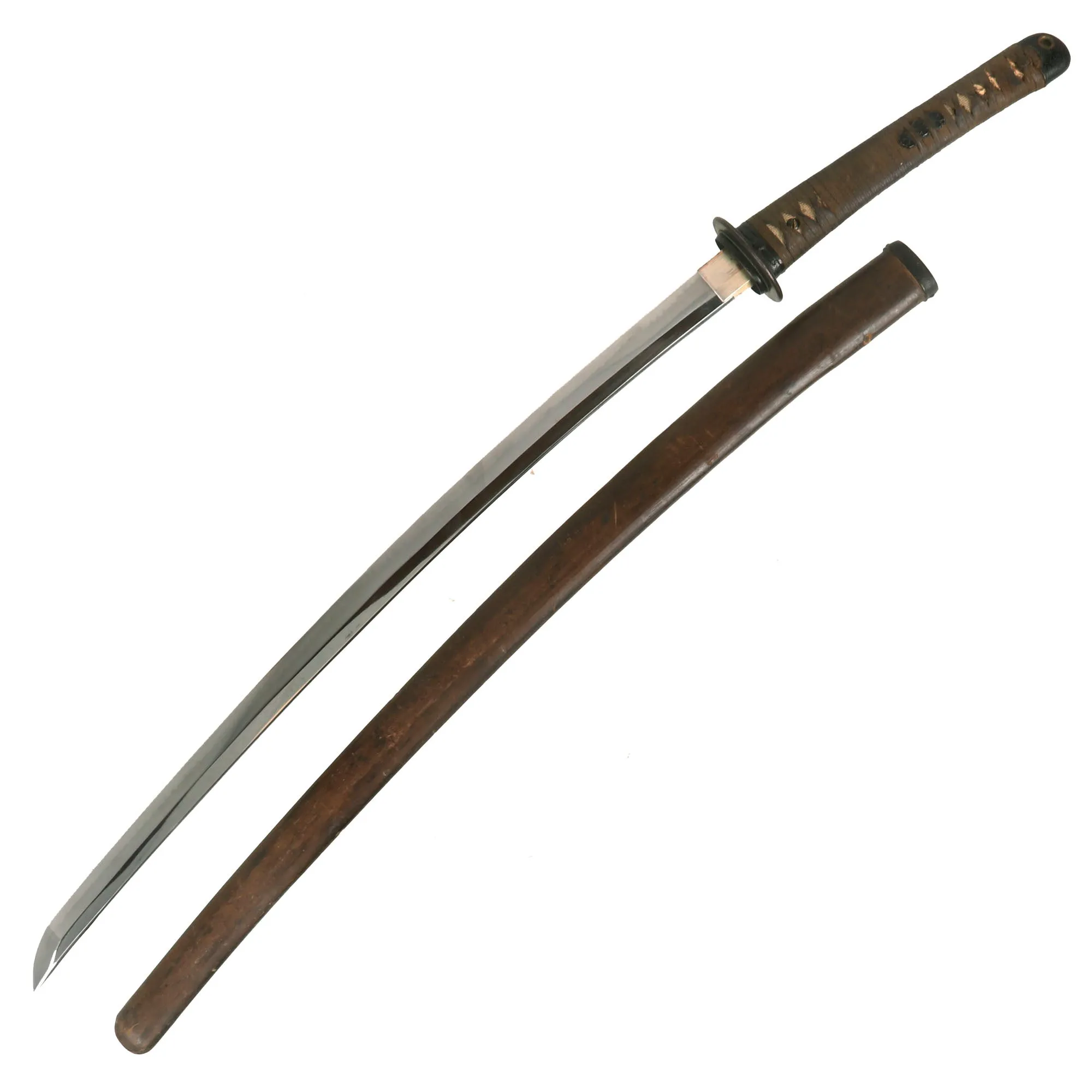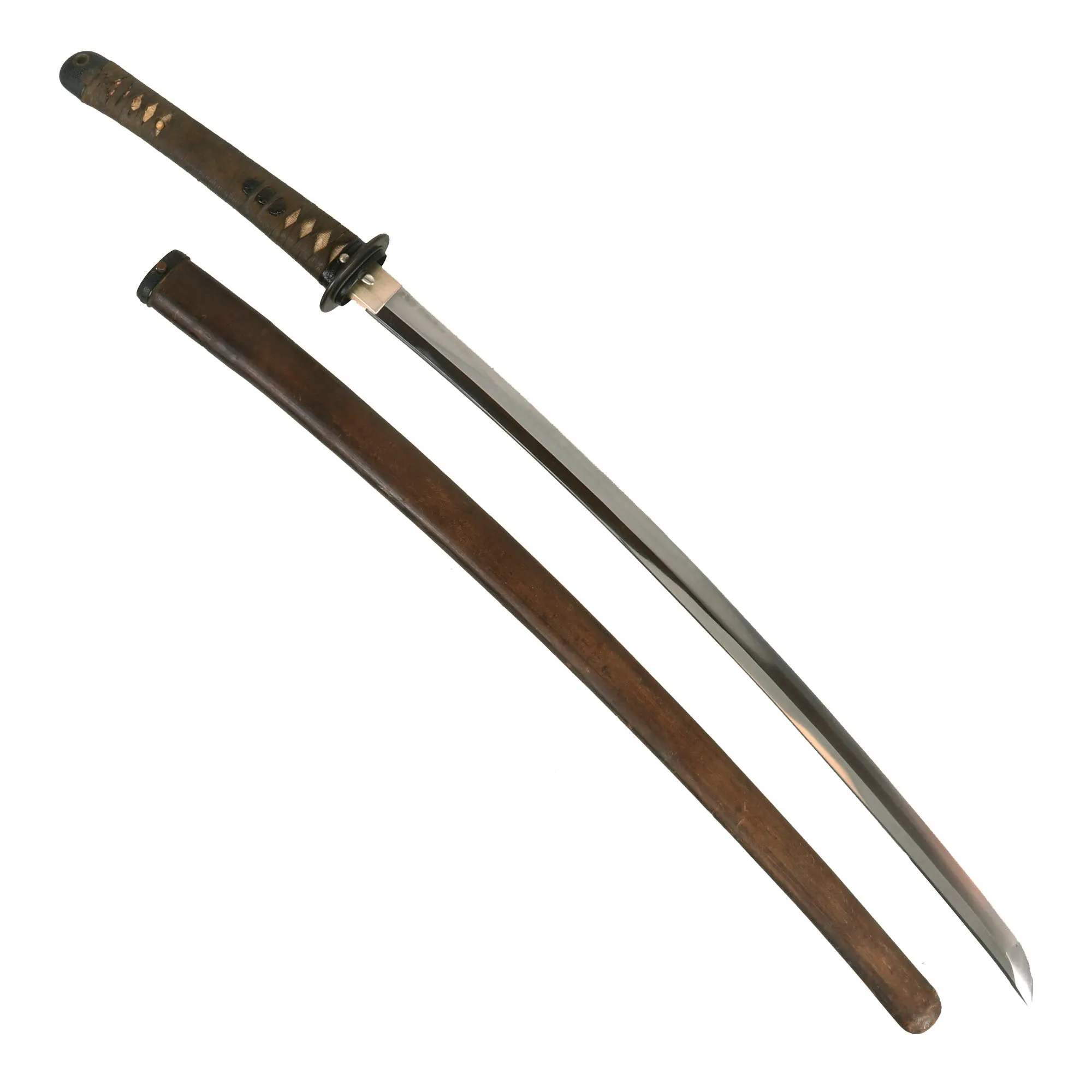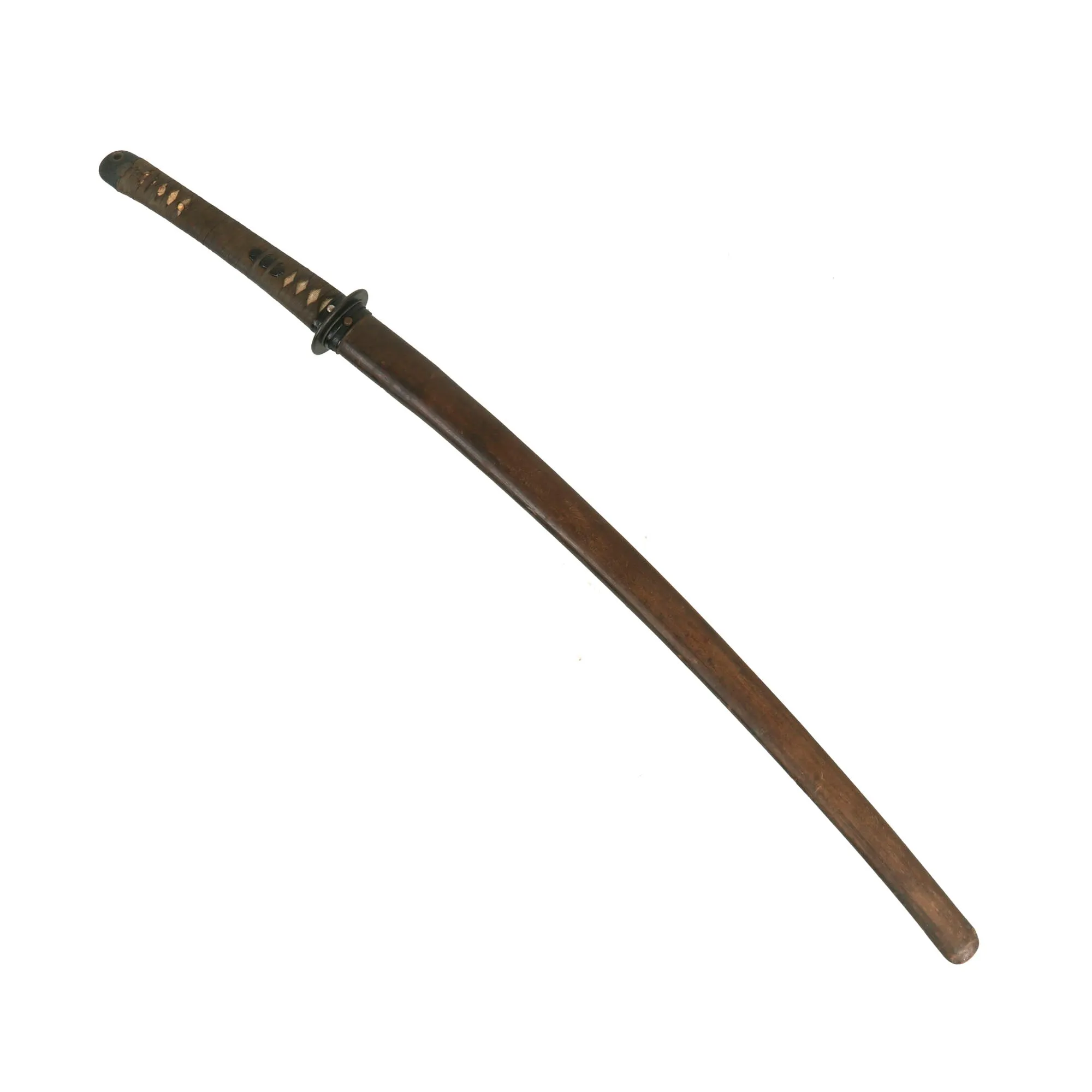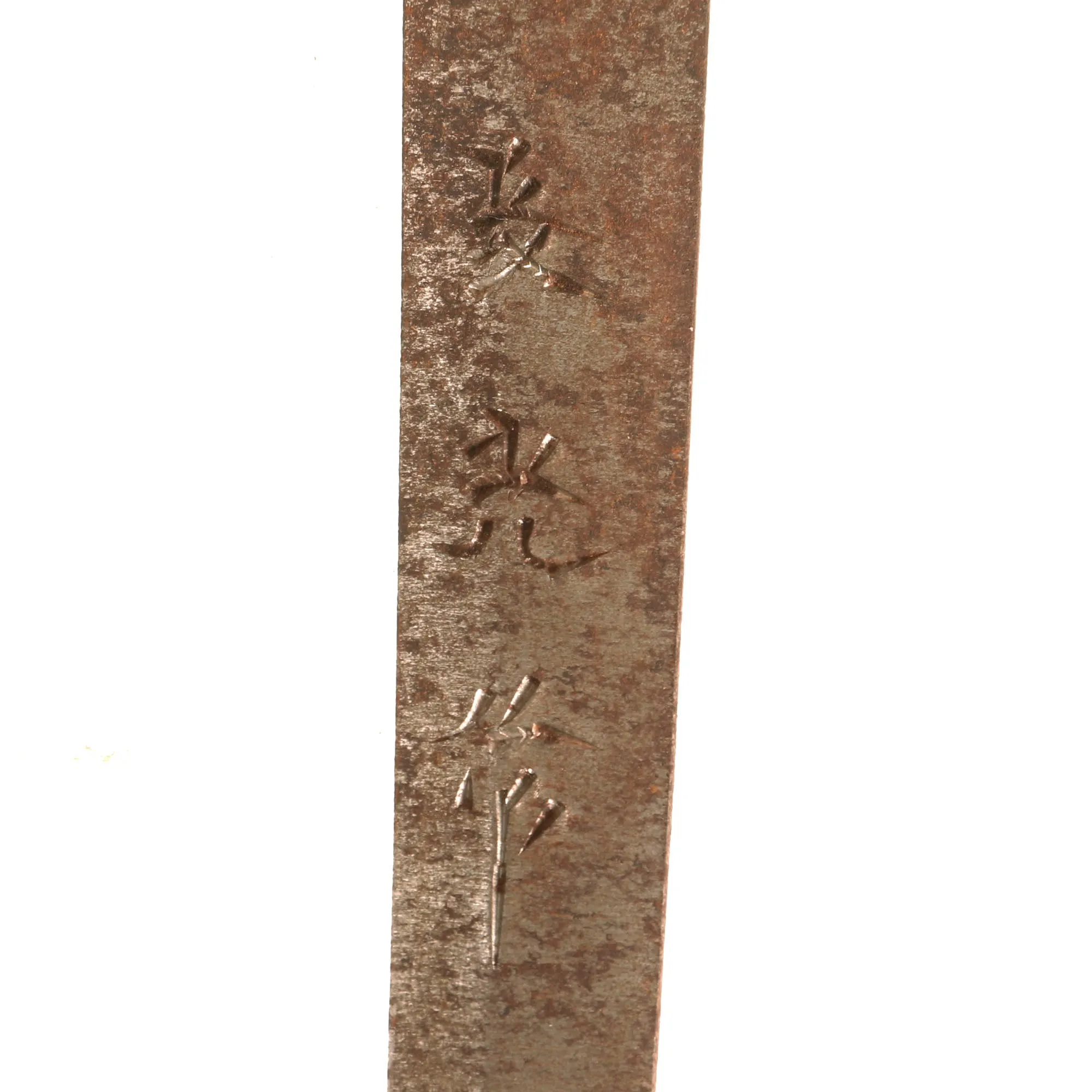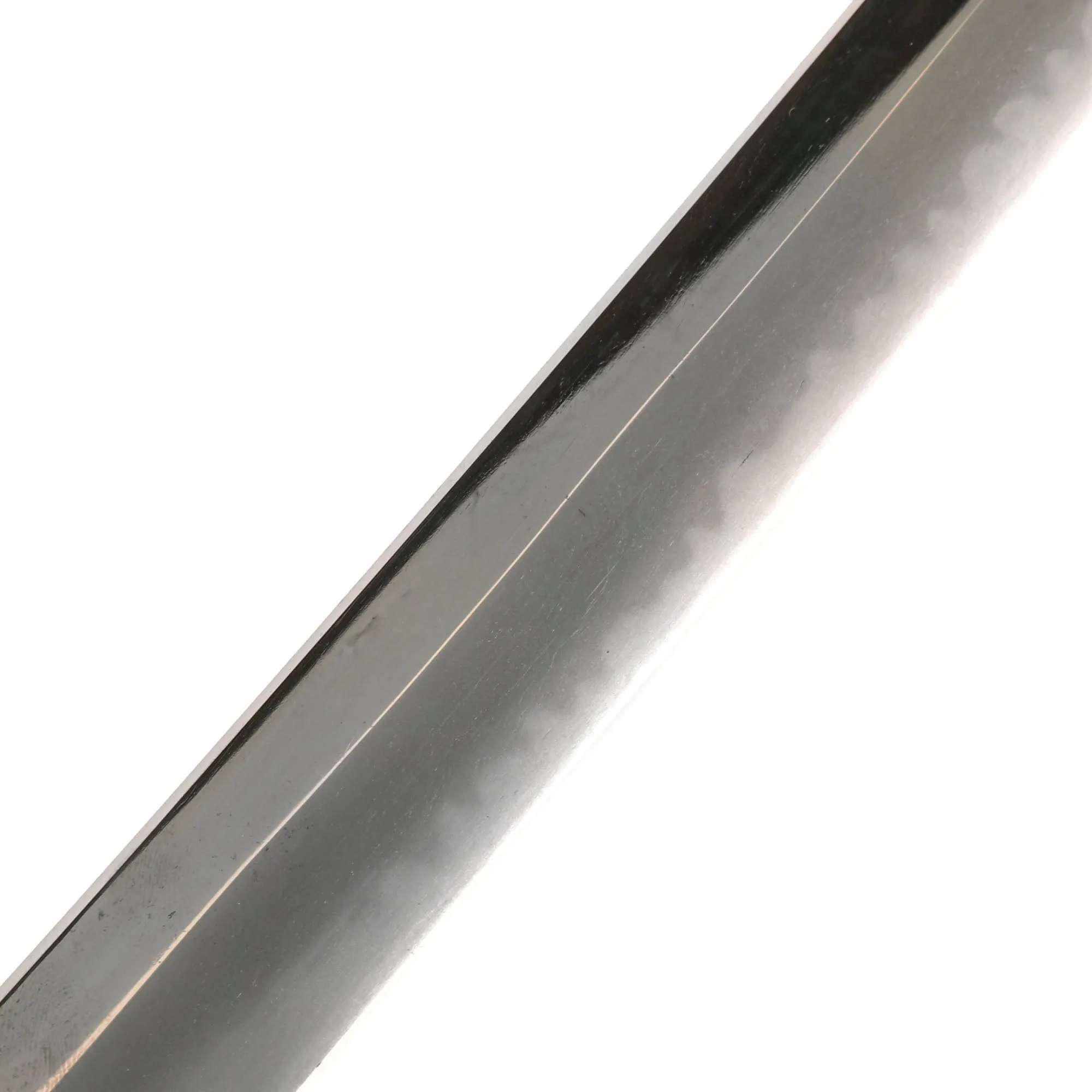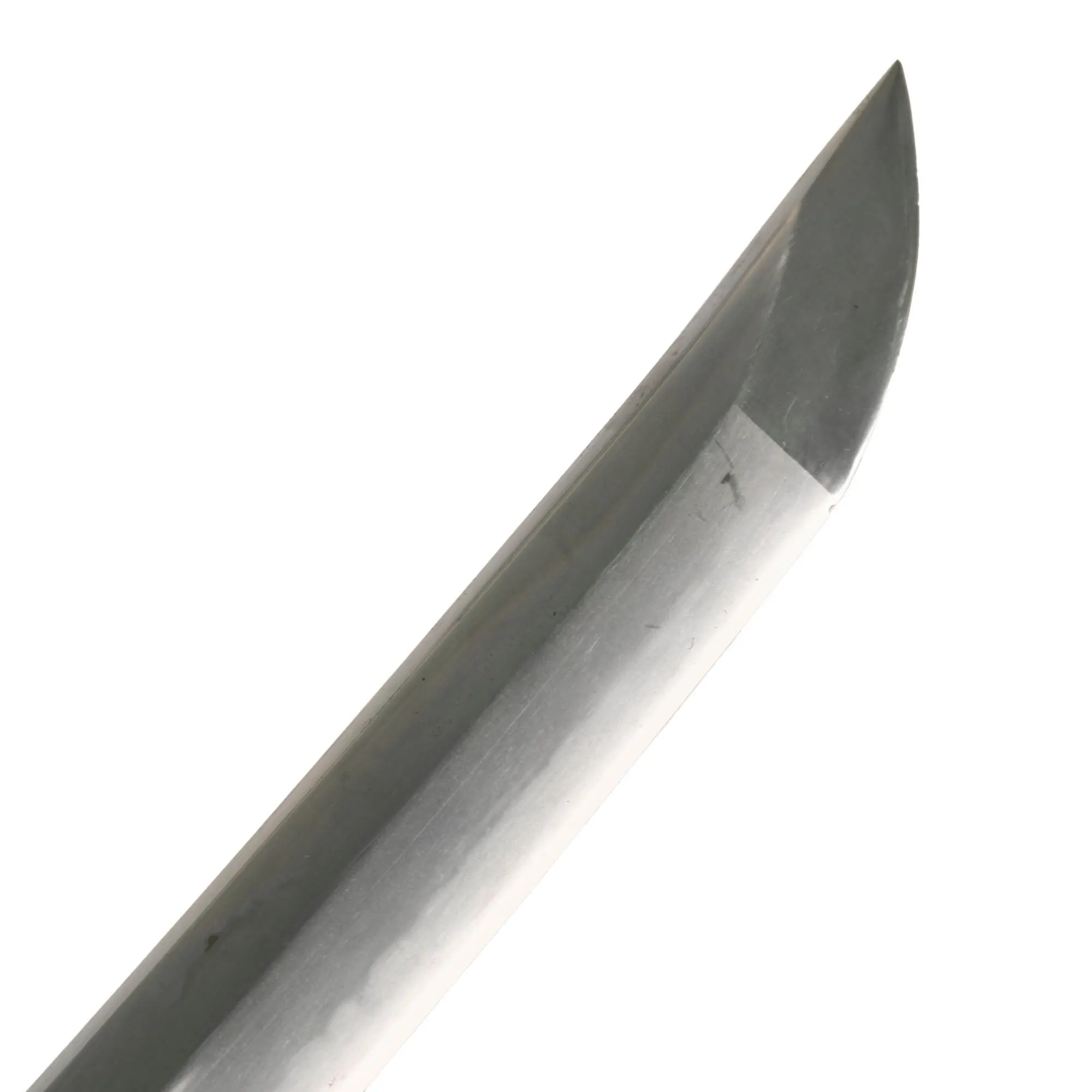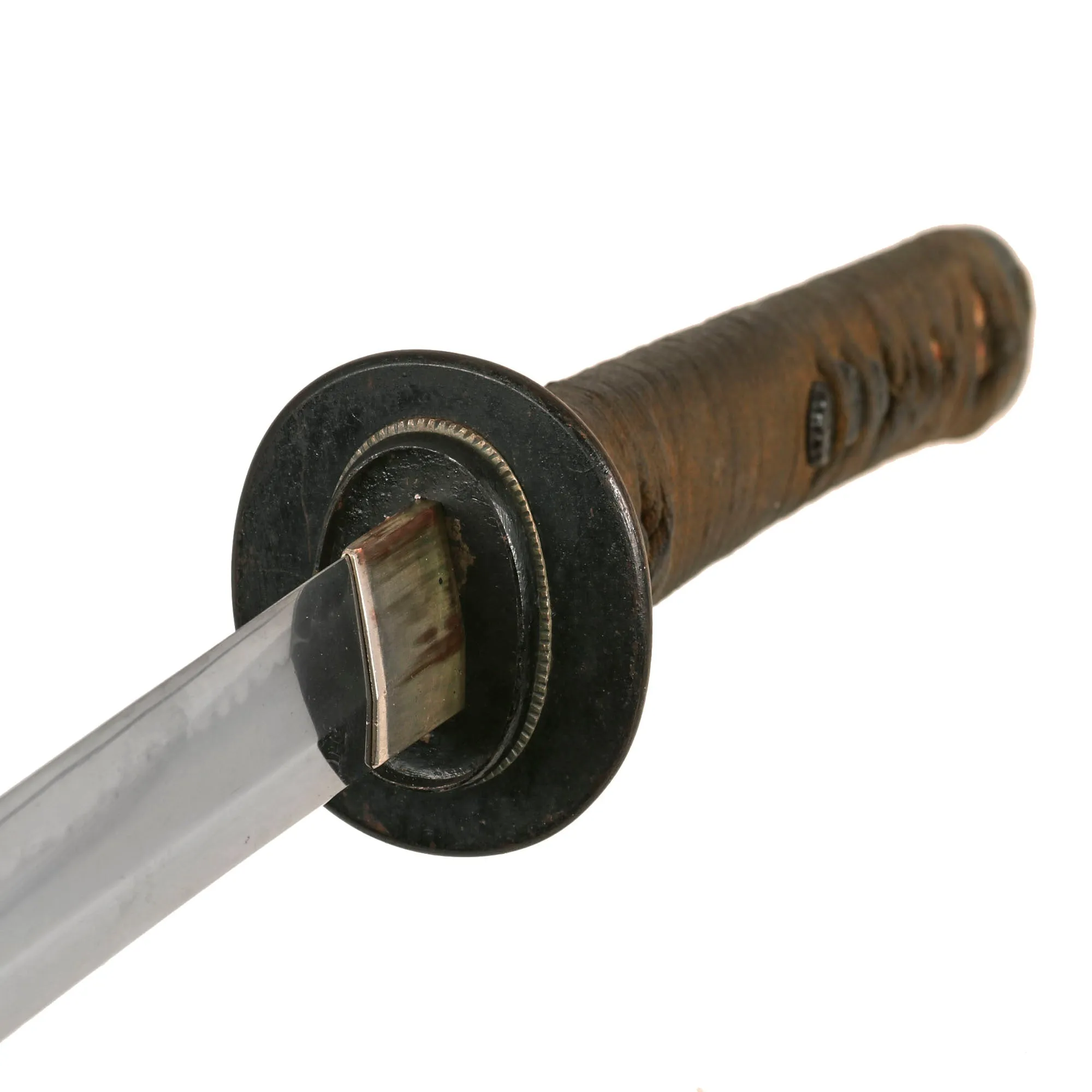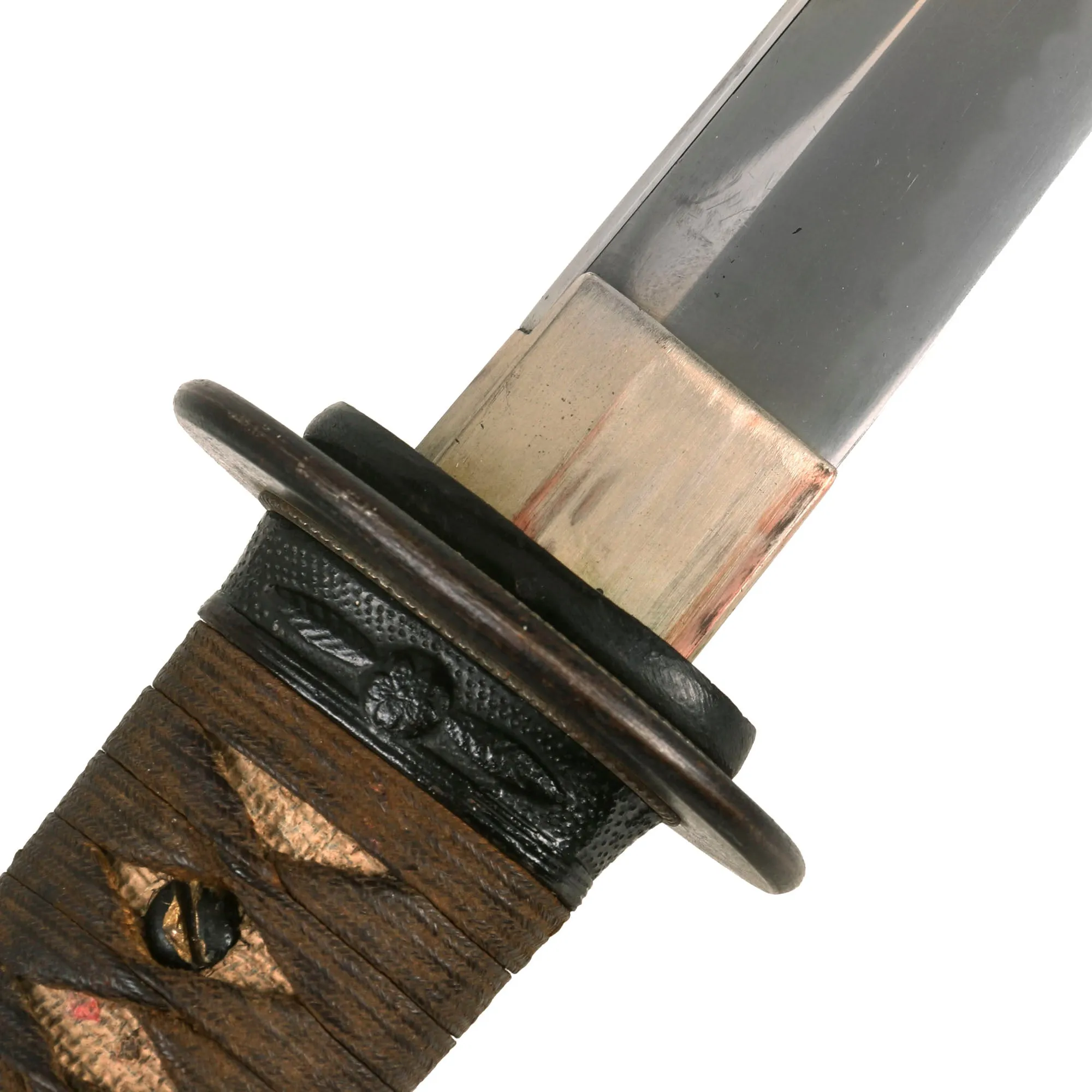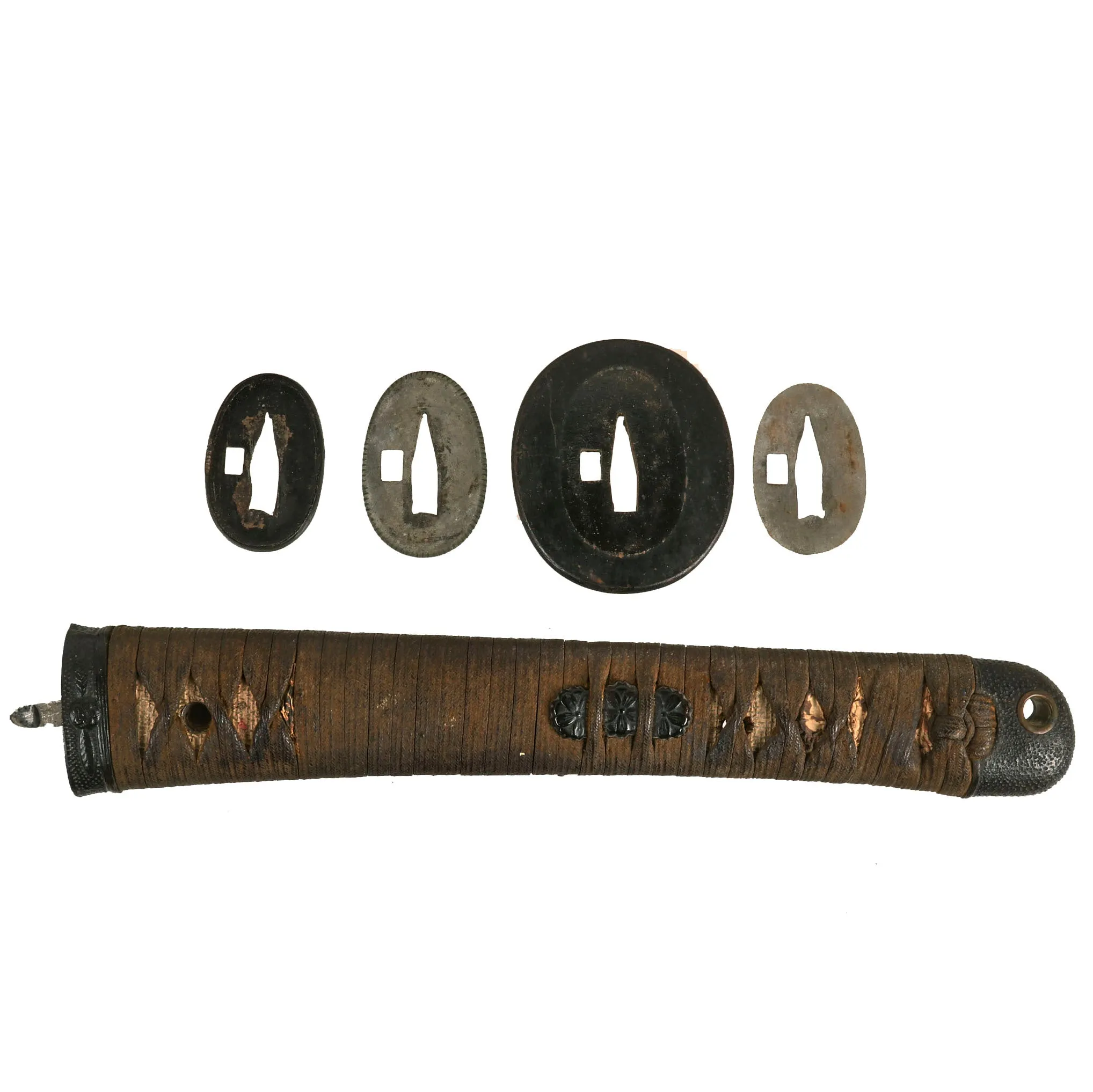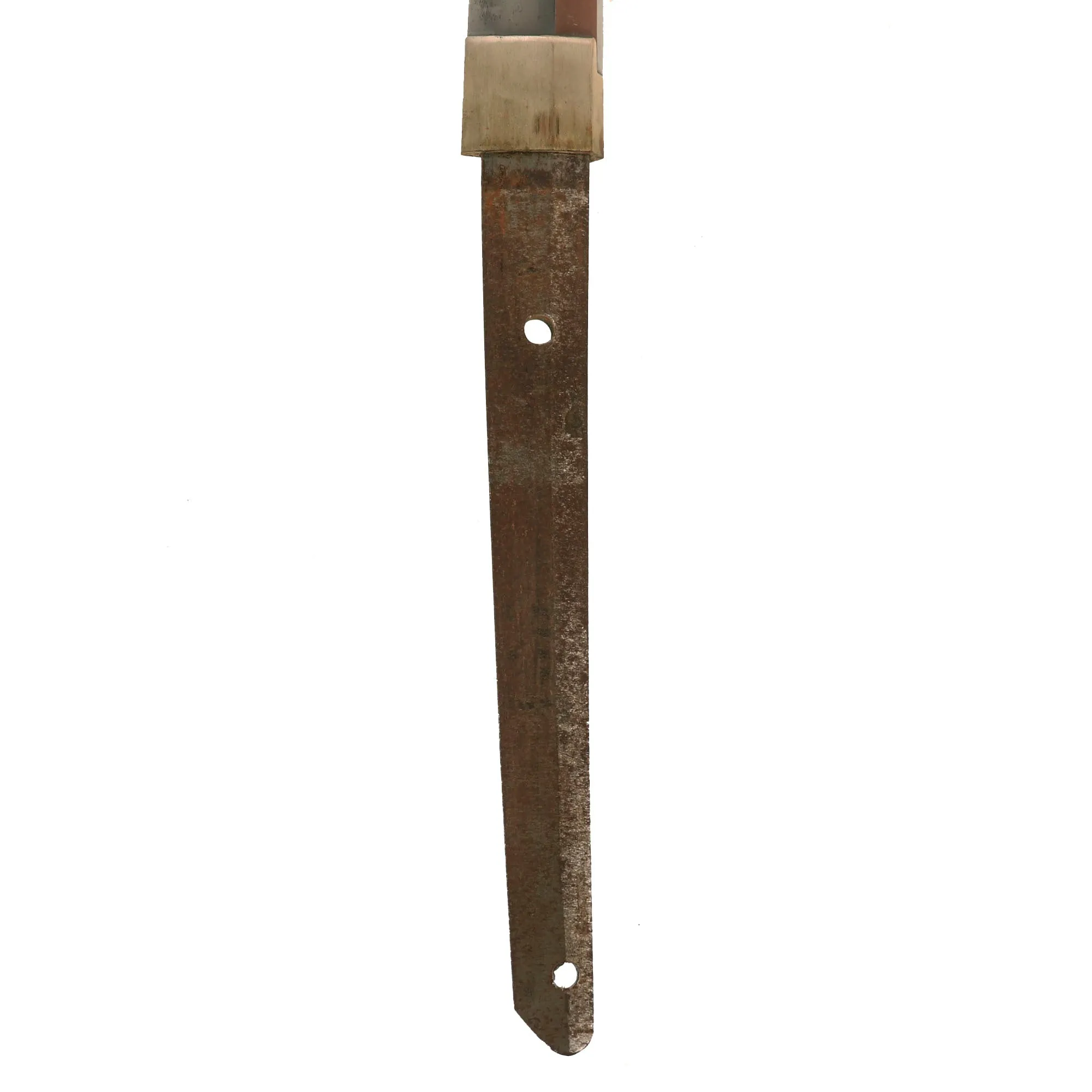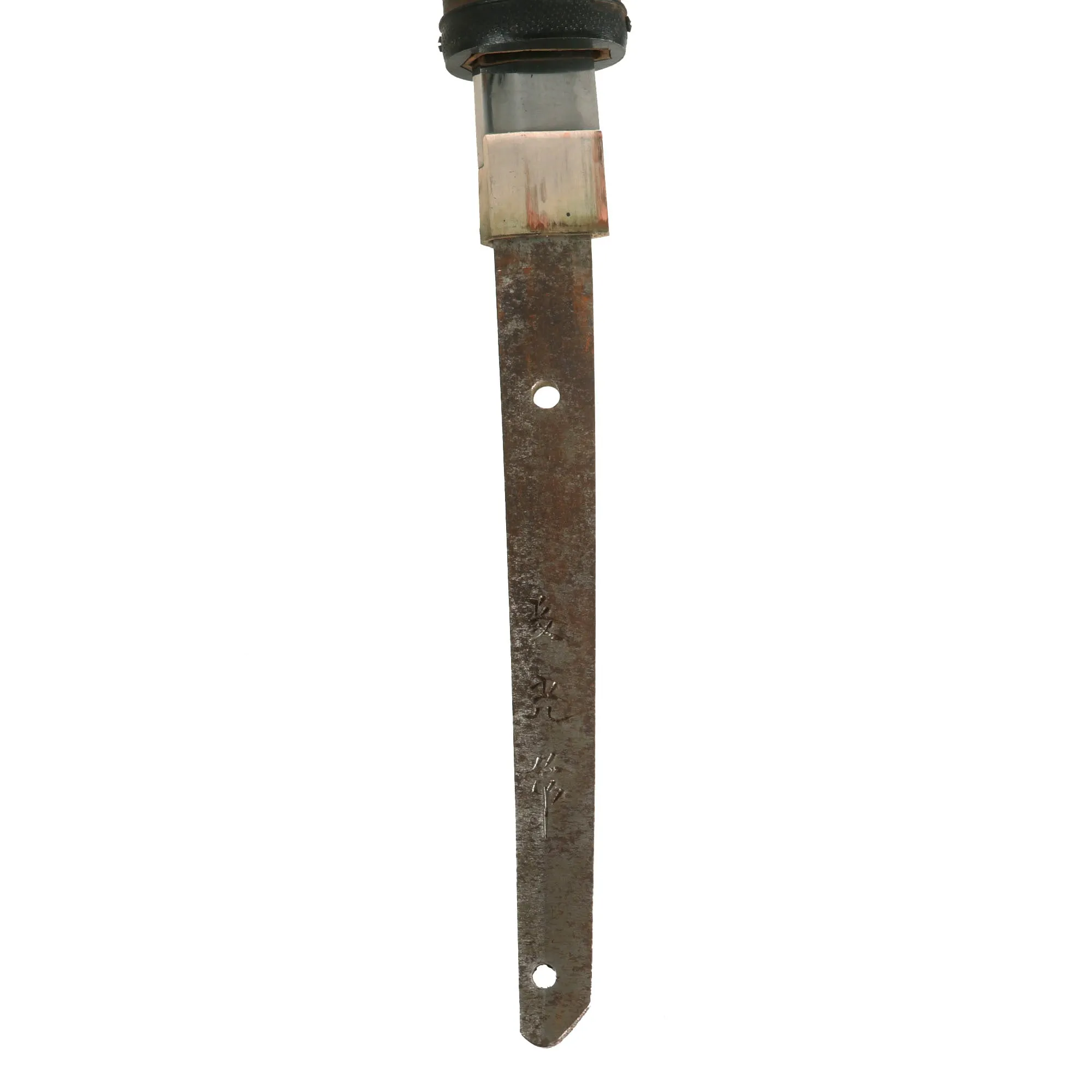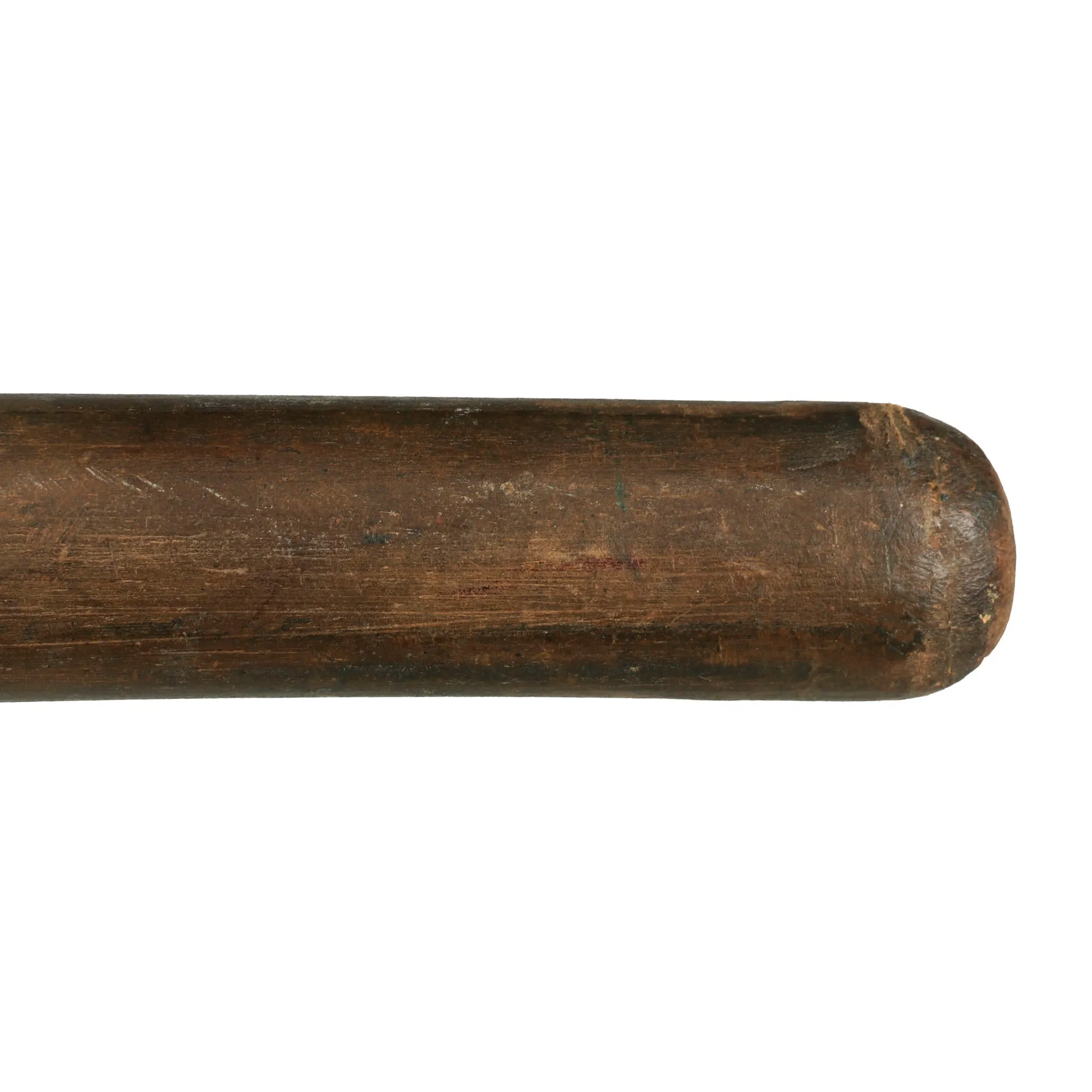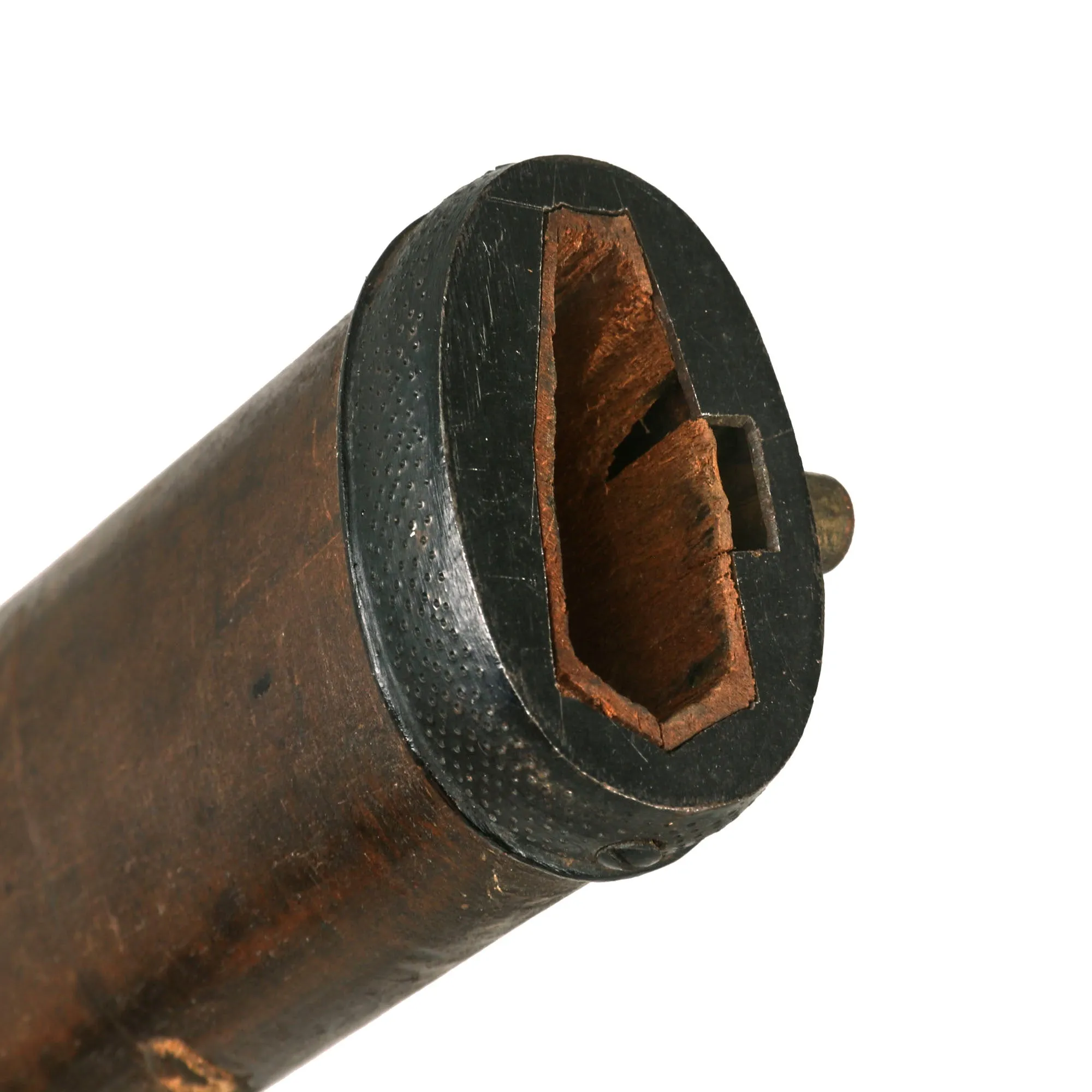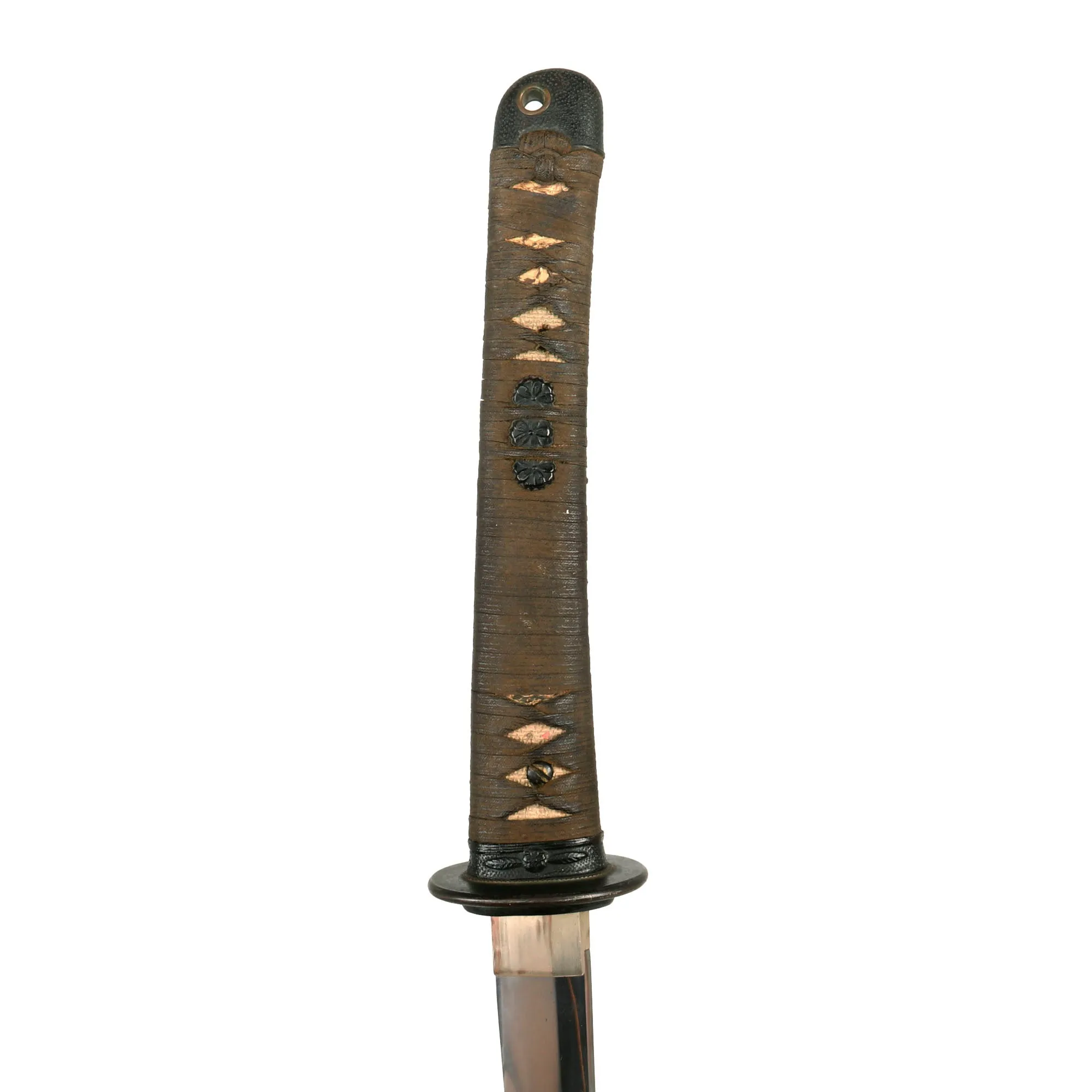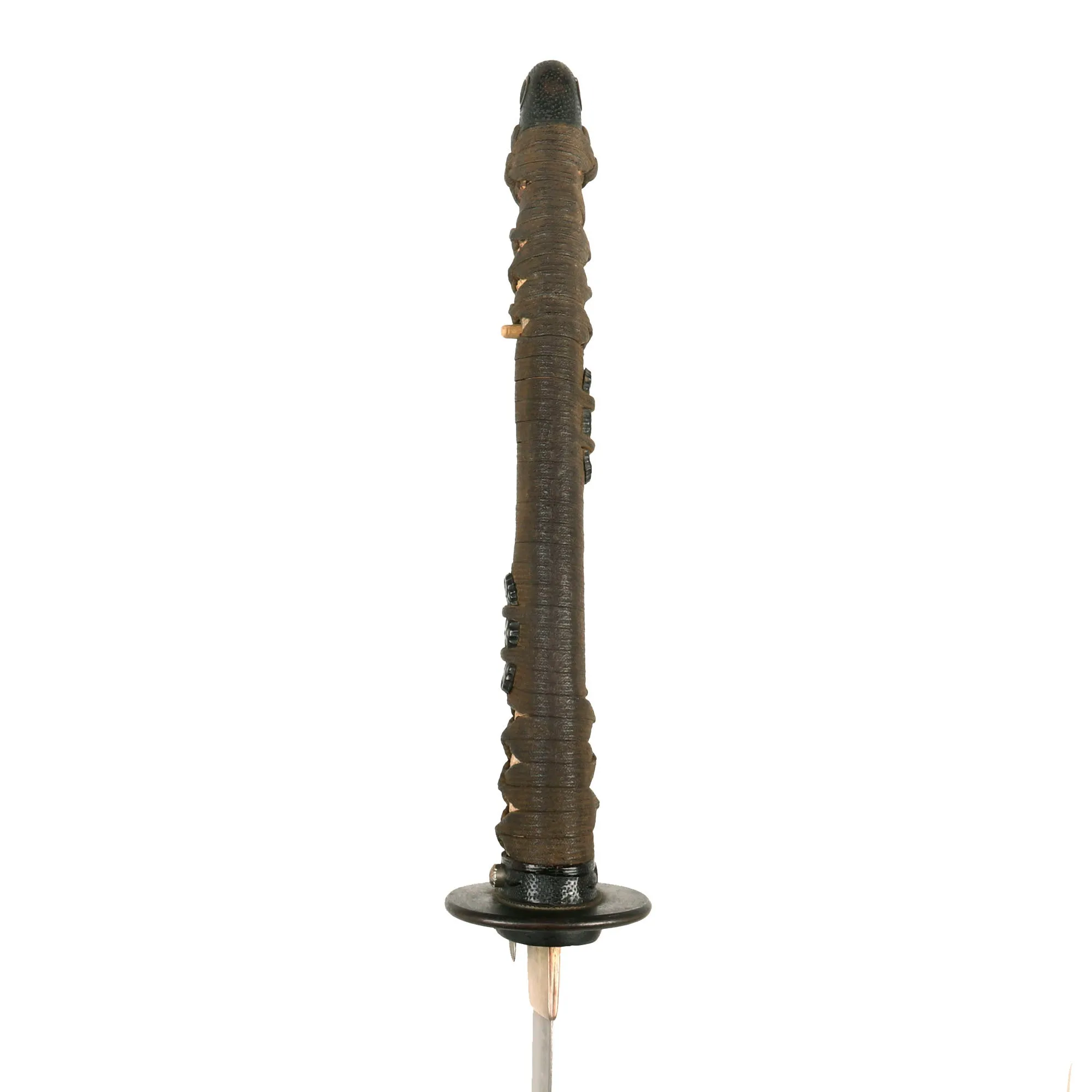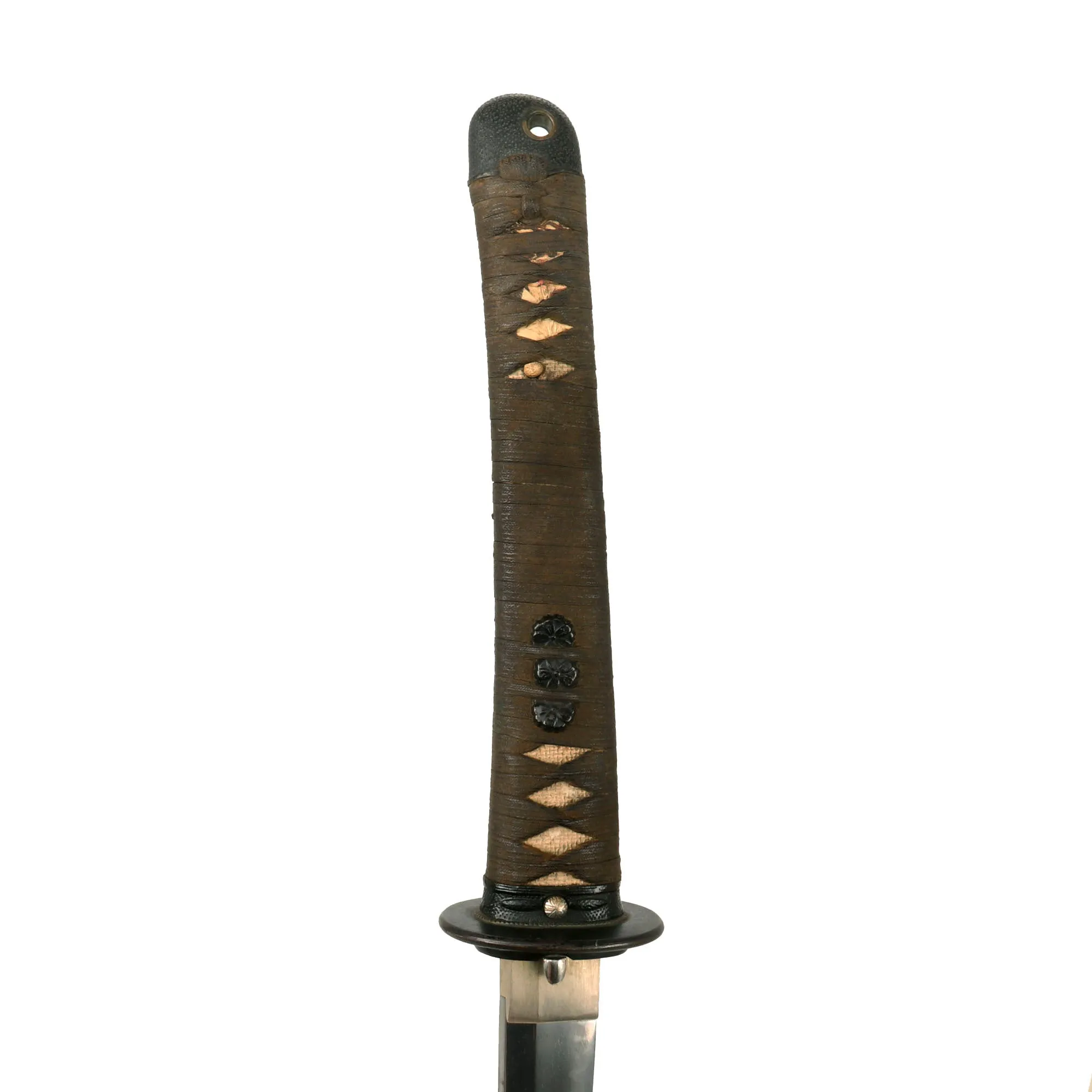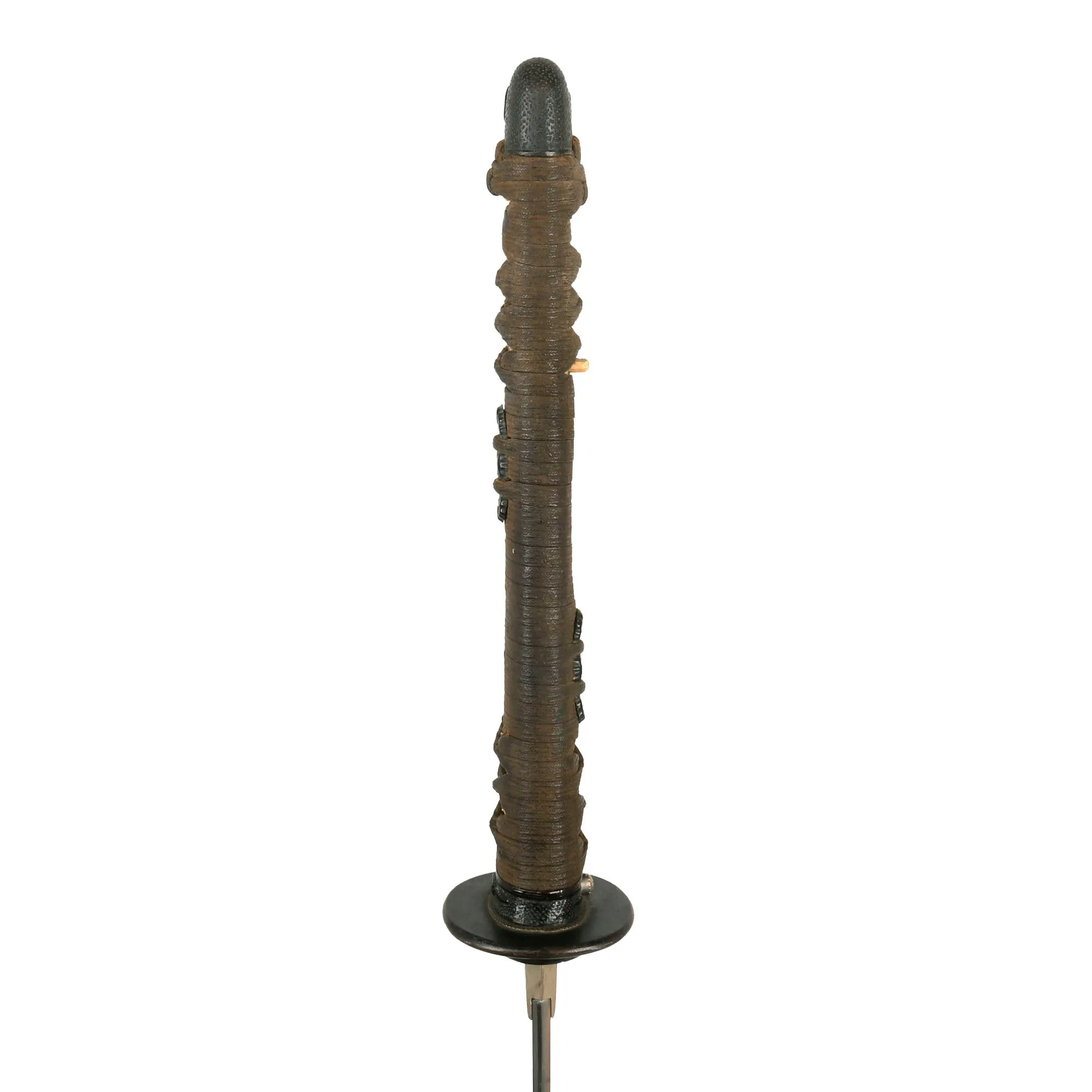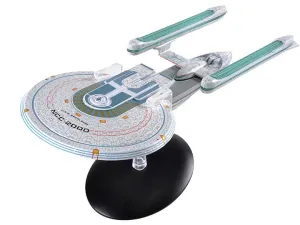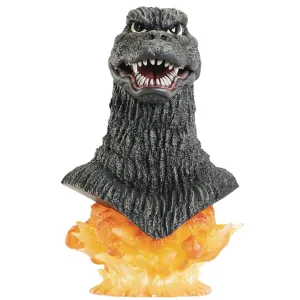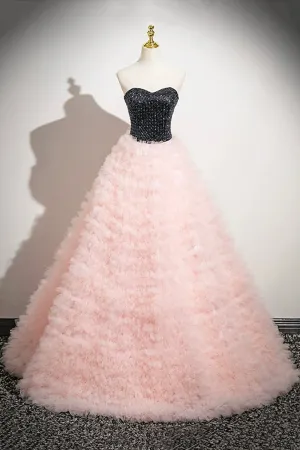Original Item: One of a Kind. Recently purchased at a large military auction, this is a great USGI Bring-Back wartime production high grade Japanese officer Katana in the Rikugun Jumei Tosho fittings. These were a high grade of variation of the 臨時正式 (Rinji Seikishi) or "Special Contingency" version of the Type 98 Shin-Gunto (九八式軍刀 kyūhachi-shiki guntō) setting. They usually feature a textured lacquered scabbard, as well as a blade lock that has releases on both sides of the crossguard, not seen on the "regular" version of the Rinji Seishiki. The cross screws through the handle, instead of the usual wooden or bamboo pegs, is another change made.
These fittings, while often called the P-1944, were in fact designed in 1938, but didn't really see much use until 1940. They were designed to be more robust than the regular Type 98 fittings, as well as less expensive and time consuming to produce. However the standard Type 98 fittings continued to be produced concurrently until almost the end of the war. The blade tang on this RJT Shin-Gunto is signed by the maker, and is handmade in the traditional fashion. A Shin-Guntō (新軍刀, new military sword) is a weapon and symbol of rank used by the Imperial Japanese Army between the years of 1935 and 1945.
The Rikugun Jumei Tosho were swordsmiths certified by the Army headquarters of Japan during wartime. Their names first appear in "Rikugun Jumei Tosho Meibo (1933)" and it is believed that they produced blades for highly ranked officers. Besides Yasukuni tosho and Minatogawa tosho, these smiths all produced Gendaito (traditionally made blades), which should be discerned from Showato (arsenal forged blades). A star stamp was marked on the blade tang when passed by Rikugun Shinsa Inspection, however there were RJT smiths that did not have them inspected routinely.
The blade on this example was hand forged, and the tang of the blade is signed (Mei) with the characters 長 光 作, which is read as NAGA MITSU SAKU or "Nagamitsu Made This". This is one of the known mei used by RJT approved smith 市原 長光 - "Ichihara Nagamitsu", also known as 市原 一龍子 長光 - Ichihara Iryuushi Nagamitsu. We have compared signature on the tang (oshigata) to other blades and this is definitely a blade by Nagamitsu. Please see figure "J" on this page at the Japanese Sword Index: .
The "Naga" character has only two horizontal strokes at the top, a trademark of swords by this particular maker. This smith was quite well known during the showa period and WWII for making very high quality blades. The swordsmith name Nagamitsu is one full of history, and arguably one of the most famous names in Japanese swordmaking history, with many very well regarded smiths using the name over the past 7 centuries. For more information, please see the above link, and also this page at the Nihonto Club website: .
The blade is handmade and was expertly crafted by a sword maker, which is indicated by a few tell-tale characteristics that include:
- Holes in the tang (mekugi-ana) are punched and not drilled.
- Visible Vibrant temper line ("hamon") with crystallization visible (Nie and Nioi) along the transition.
- Visible grain (hada) in the blade body (ji), only possible with laminated steel.
- Blade is signed on the tang by the maker ("Mei")
- Blade has a proper geometric Yokote at the tip (kissaki) with a Boshi (tip temper line)
Offered in very good condition, the blade is still sharp and looks great. There are just a few small bends on the kissaki edge, and a 1mm dent/nick just before. The overall polish is still very good, showing just a bit of wear and scattered staining. The aspects of the blade and temper line are easily seen in any type of light, and it is really lovely. Blade length is approximately 25 ⅜ inches and overall length of 36 ½ inches. The katana has a handmade blade with a Futsu 普通 (regular) Nakago (tang) with a haagari (asymmetrically rounded) nakago-jiri (tang tip). It has a proper geometric kissaki (tip) with a clear yokote (division between body and tip).
The hamon type looks to be a very rapid CHŌJI MIDARE (丁子乱れ - irregular clove tree flower), which is very attractive and a type that Nagamitsu is associated with. There are NIE crystals visible at the edge of the hamon, with the correct NIOI cloudiness in the body of the hamon. There is a lot of activity, also a hallmark of Nagamitsu, including some types that we were not able to classify. The Yokote is still clearly definted, and the tip temper line, or BOSHI, is the OO-MARU (大)丸 style, which means it is a large circle shape with a turnback at the MUNE (blade spine). The body of the blade has very attractive HADA (肌 - steel grain), which is of the KO-ITAME (小板目 - Small Wood grain) type. With the long delay for traditional togishi polishing, blades like this that are ready to display are definitely in demand.
The blade mountings are the typical Rikugun Jumei Tosho Army style, similar to the P-1944. MARU GATA (round shaped) iron tsuba (cross guard) with no decorations, a plated copper habaki (blade collar), with an iron fuchi (grip collar). There are three seppa (spacers) surrounding the tsuba, properly inlet for the scabbard lock, and the one closest to the blade is "cup" shaped. The scabbard lock is present and fully functional, but unlike the usual pattern, there are release buttons on both the fuchi and on the scabbard itself.
The tsuka (handle) has black painted brass Imperial Army cherry blossom menuki (grip decoration), and an unadorned black Kabuto-Gane (Pommel Cap), with a hanger eyelet. The SAME (handle covering) is not Stingray, but burlap dipped in wax to help with grip as well as water resistance. This type of covering is actually a hallmark of RJT swords by Nagamitsu. Wrapped around this is a complete Ito (cloth binding), which looks to have been lacquered, as many RJT pattern handles were. Since then it has seen use, which has degraded the lacquer coating a bit and made it look dirty. The handle is also slightly wider at the guard and pommel ends, with a lovely classic tapered look. An interesting feature of the RJT fittings is that the handle is actually held on by brass screws, though in this case only the peg closest to the blade is, while the lower one has a wooden peg.
The Scabbard (saya) is wooden, and unlike most examples of RJT swords we see, it is not finished and only looks to have a light stain applied to the outside. It also only has the top KOIGUCHI fitting, without any hanger rings or other fittings. We have been told that this was a custom option, and usually it could be covered with a leather field cover. These were used so that it could be worn "samurai style", edge up and secured through a belt. They most likely had a second scabbard that was a standard RJT type, however it was lost over the years.
An incredible Japanese RJT Shin-gunto by ICHIHARA NAGAMITSU, one of the most well-known WWII era smiths, this is a real USGI bring-back from WWII, ready to display and cherish!
Specifications:
Blade Length: 25 ⅜”
Blade Style: Shinogi-Zukuri
Overall length: 36 ½”
Scabbard Length: 28 ½”
It has been over one thousand years ago that the art of making swords appeared in Japan. The swordsmiths of the time may not have known it but they were creating a legendary sword. The Samurai sword has seen combat in many battlefields. From the early days of the Samurai warrior to the fierce battles in the South Pacific during WWII.
Each hand-made Samurai sword is unique because it is forged from folded steel stock. A tremendous amount of work is dedicated to creating these pieces. They were an instrument of war as much as a beautiful artifact to adorn a room.
The Samurai sword has grown to be one of the most highly desired military antiques.




